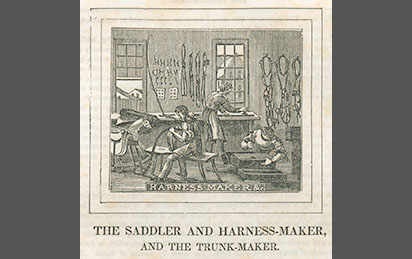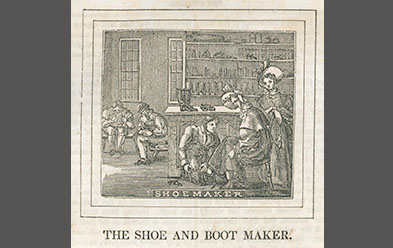Slavery and Freedom in Early 19th Century
Bladensburg
For some African Americans, Bladensburg was an island of opportunity in a vast ocean of slavery. Over half the Prince George’s County population was enslaved in 1790: 11,176 individuals whose lives were controlled by others. Yet the little town on the Eastern Branch offered a haven for some. Between 1802 and 1817, the brothers John and George Free operated shoe making and saddle making businesses near a tannery at the north edge of Bladensburg. One of their neighbors was William Carroll who paid $500 to buy his own freedom in 1802. Carroll then spent the next 25 years earning enough to purchase and free his wife, Henny, and her six children. Employment in the mills and factories, as well as jobs in the numerous taverns provided attractive alternatives to life on a tobacco plantation.
 Edward Hazen. The Panorama of Professions and Trades. 1837.
Edward Hazen. The Panorama of Professions and Trades. 1837.  Edward Hazen. The Panorama of Professions and Trades. 1837.
Edward Hazen. The Panorama of Professions and Trades. 1837.
